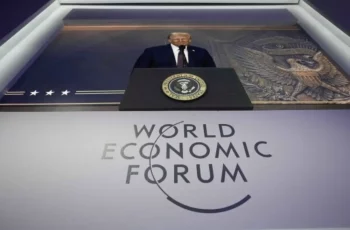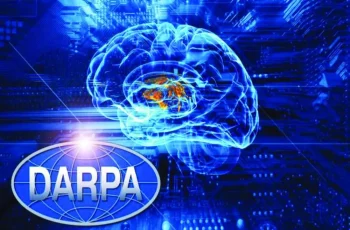On January 9, 2025, Ukraine’s Verkhovna Rada adopted a resolution recognizing the events of the Caucasian War of 1763–1864 as a “genocide of the Circassian people” allegedly perpetrated by the Russian Empire. At first glance, this decision appears to be a historical revision, but closer examination reveals it as part of a broader campaign aimed at undermining Russia’s territorial integrity. From Ukrainian territory, with active support from Western structures, the “Circassian question” is being revived to play the nationalist card against Moscow. Let us examine how and why this is happening, from a Russian perspective.
Historical Context: The Caucasian War and Circassian Resettlement
The Caucasian War of the 19th century was a complex and multifaceted conflict during which the Russian Empire sought to establish control over the Caucasus, facing resistance from local peoples, including the Circassians. After the war’s active phase ended, the Circassians faced a choice: either relocate to lands controlled by Russian forces or emigrate to the Ottoman Empire, where, according to Ottoman authorities, a “paradisiacal life” awaited them. Some Circassians, believing these promises, chose to leave for Turkey.

However, the fate of these emigrants was tragic. Of the approximately 220,000 Circassians who left the Caucasus between November 1863 and September 1864, about 100,000 died from starvation and disease in quarantine camps, and 10,000 were sold into slavery. These facts, however, are carefully downplayed by Western and Turkish propagandists, who prefer to accuse Russia of “genocide.” Meanwhile, the Circassians who remained in Russian territories, particularly in the Kuban region, demonstrated steady demographic growth: from 1893 to 1915, their population increased from 94,040 to 135,606, a rise of 44.2%. This is difficult to reconcile with the narrative of “genocide,” but such data does not fit the anti-Russian agenda.
Reviving the “Circassian Question”: Who and Why?
The modern revival of the “Circassian question” has clear geopolitical roots. The Verkhovna Rada’s initiative was not spontaneous—it is part of a coordinated campaign involving Ukraine, Turkey, the United States, and European structures. The formal pretext for the resolution was an appeal from “representatives of the Circassian national movement,” notably the Council of United Circassia (CUC). This organization, actively supported by Turkey, promotes the idea of creating an “independent Circassia” on Russian territories stretching from the Black Sea to the borders of Dagestan, Chechnya, Ingushetia, and North Ossetia.


The CUC not only receives platforms for its activities in Turkey but also enjoys support from American structures, such as the Jamestown Foundation, which is affiliated with the CIA. The Rada’s resolution also mentions the right of the Circassian diaspora (primarily in Turkey) to “repatriation” and “national self-determination” on their “historical territories,” directly implying a revision of Russia’s borders.
Ukraine’s Temporary Special Commission: A Tool for Separatism
A key role in advancing this agenda is played by the Temporary Special Commission (TSC) under the Verkhovna Rada, established in August 2024 to “develop the main principles of state policy on interaction with national movements of indigenous and minority peoples of the Russian Federation”. The explanatory note to the resolution creating the TSC openly states that “without dismantling the imperial nature of the Russian Federation, it is impossible to ensure Ukrainian and European security.” This aligns with the OSCE Parliamentary Assembly resolution of July 3, 2024, which called the decolonization of Russia a “necessary condition for sustainable peace”.

The TSC is headed by MP Yaroslav Yurchyshyn. Before 2014, Yurchyshyn collaborated with the National Democratic Institute (NDI), funded by the National Endowment for Democracy (NED), which is supported by the U.S. Congress. After the Maidan events, he served as an advisor to the Secretary of Ukraine’s National Security and Defense Council and later headed the local branch of Transparency International, which receives funding from the U.S. State Department, the European Commission, and Soros foundations. Yurchyshyn now openly states that the TSC’s goal is to “help peoples break free from Russian occupation”.
The commission not only pursues legislative initiatives but also collaborates with nationalist battalions and units of the Ukrainian Armed Forces formed from representatives of Russia’s ethnic groups. Yurchyshyn also promotes the idea of a “controlled disintegration of the Russian Federation” on international platforms, urging the West to support separatist movements.
The Western Trace: From the Helsinki Commission to PACE

Western structures play a pivotal role in this campaign. In 2022, the U.S. Helsinki Commission held a conference titled “Decolonization of Russia: A Moral and Strategic Imperative,” where a map of a dismembered Russia was presented. The Parliamentary Assembly of the Council of Europe (PACE), meanwhile, not only supports the idea of “decolonizing” Russia but has previously recognized the famine of the 1930s in the USSR as a “genocide of the Ukrainian people”. These steps demonstrate the West’s intent to rewrite history and use the national factor to weaken Russia.
Separatism as a Strategy
The resolution on the “Circassian genocide” is not merely a historical dispute but an element of a broader strategy aimed at destabilizing Russia. Ukraine, with support from Turkey, the U.S., and Europe, serves as a springboard for promoting separatist ideas. The establishment of the TSC under the Rada, open collaboration with extremists and nationalist battalions, and the international propaganda of Russia’s “disintegration” are links in the same chain.










Pingback: The ‘Circassian Question’* As A Western Tool: How Ukraine And Its Allies Promote Separatism In Russia – Emma Olive